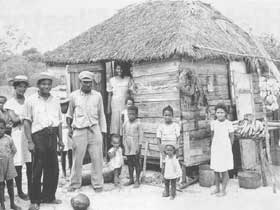Here’s a clear and detailed history of the Cayman Islands, from early exploration to modern times:
History of the Cayman Islands
1. Pre-Colonial Period
- The Cayman Islands were uninhabited before European discovery.
- There’s no evidence of indigenous peoples living on the islands before Europeans arrived.
2. European Discovery (1503)
- First recorded sighting: May 10, 1503 by Christopher Columbus on his fourth voyage.
- He named them “Las Tortugas” because of the many sea turtles found in the waters.
- The name eventually changed to “Caimanas” (from the Carib word for marine crocodiles), which evolved into “Cayman.”
3. Pirates, Privateers & Shipwrecks (1600s–1700s)
- The islands became a haven for:
- Pirates and privateers (like Edward Teach, aka Blackbeard)
- Shipwreck survivors
- Deserters from the British navy
- No formal government existed, and the Cayman Islands were mostly lawless for a time.
4. British Settlement & Colonial Rule (1670 Onwards)
- In 1670, the Treaty of Madrid officially ceded the Cayman Islands and Jamaica to Britain from Spain.
- Permanent settlement began in the 1730s, mainly by British families, African slaves, and seafarers from Jamaica.
- The economy was based on fishing, turtle hunting, and wood cutting.
5. Slavery and Emancipation
- Enslaved Africans were brought to work in households, on ships, and in other trades.
- Slavery was abolished in 1834, in line with British law.
- Many Caymanians today are descendants of both European settlers and freed slaves.
6. 19th–Early 20th Century: Maritime Heritage
- Caymanians developed a strong tradition of seafaring, becoming:
- Shipbuilders
- Sailors
- Marine merchants
- Many Caymanian men worked on foreign ships, especially in the merchant navy and U.S. shipping lines.
7. Separation from Jamaica (1959–1962)
- Cayman was governed as a dependency of Jamaica until Jamaica gained independence in 1962.
- The Cayman Islands chose to remain a British colony, gaining greater self-rule but still under British oversight.
8. Economic Transformation (1960s–1990s)
- In the 1960s–1970s:
- The islands transformed into a tax haven and major offshore financial center.
- Growth in tourism with luxury hotels and cruise ships.
- This attracted foreign investment, skilled workers, and expatriates from around the world.
9. Modern Era (2000s–Present)
- The Cayman Islands today are known for:
- A stable government
- A high standard of living
- A leading financial sector
- A strong tourism industry with global appeal
- Still a British Overseas Territory, with a Governor appointed by the UK and an elected Premier handling domestic affairs.
10. Recent Events
- The islands continue to face global scrutiny over financial transparency, though they have implemented reforms.
- In 2004, Hurricane Ivan caused major destruction, especially to Grand Cayman, but the country rebounded quickly.
- Cayman continues to focus on environmental conservation, digital transformation, and economic diversification.



